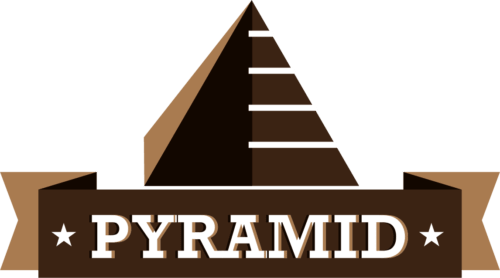Planning for retirement is a crucial financial goal, necessitating both foresight and discipline. A pivotal step in this retirement planning process is selecting the most suitable retirement savings account(s). While the plethora of choices can be daunting, early planning is imperative. Consider it like a snowball: it starts small but grows exponentially with consistent contributions over time. By understanding your unique needs, you’ll be better equipped to make a decision that sustains you through retirement.

It’s essential to note that for most retirement accounts, withdrawing funds before age 59 ½ results in not only paying taxes on the amount but also incurring a 10% penalty. As a tax expert, I’ve often seen individuals mistakenly believe that a mere 10% withholding on their retirement distribution suffices. However, the amount is also subject to ordinary income tax, which varies based on total income.
This guide will outline the various retirement accounts available, shedding light on their features, tax implications, and other considerations. By its conclusion, you’ll have a foundational understanding of which retirement account is optimal for your needs.
401(k) Plans:
Features:
- Offered predominantly by larger employers, these plans allow employees to direct a portion of their pre-tax salary towards retirement. Many employers even match contributions up to a certain limit.
Tax Advantages:
- Immediate tax deductions on contributions, with investment gains taxed only upon withdrawal during retirement.
Eligibility:
- Full-time employment with a company that provides a 401(k) plan.
Is It Right for You?
- If your employer matches 401(k) contributions, this is likely an ideal choice due to the “free” additional funding.
Traditional IRA (Individual Retirement Account):
Features:
- Similar to 401(k)s, Traditional IRAs let you make pre-tax contributions, subject to annual limits (e.g., $6,500 in 2023, or $7,500 for those 50 or older).
Eligibility:
- Open to anyone employed or running their own business, but with annual contribution limits.
Is It Right for You?
- An IRA is ideal if your employer doesn’t offer a 401(k) or its matching benefits.
Roth IRA:
Features:
- Unlike Traditional IRAs, Roth IRAs use post-tax dollars. However, both earnings and withdrawals during retirement are tax-free.
Tax Advantages:
- Tax-free growth, plus no Required Minimum Distributions (RMDs) during retirement.
Eligibility:
- Income limitations apply (e.g., $153,000 for single filers in 2023).
Is It Right for You?
- If you anticipate a higher tax bracket during retirement or seek to minimize future taxes, a Roth IRA is an excellent choice.
SEP-IRA (Simplified Employee Pension Individual Retirement Account):
Features:
- Tailored for the self-employed and small business owners. Only the employer contributes.
Tax Advantages:
- Deductible contributions with tax-deferred investment growth.
Eligibility:
- Exclusively for self-employed individuals and business owners.
Simple IRA:
Features:
- Designed for small businesses, employees decide their contribution amounts, and employers may match or offer non-elective contributions.
Tax Advantages:
- Like Traditional IRAs, contributions are tax-deductible, with tax-deferred growth.
Eligibility:
- Small businesses with fewer than 100 qualifying employees.
Solo 401(k):
Features:
- For the self-employed, it allows both employee and employer contributions.
Tax Advantages:
- Mirroring the standard 401(k), it offers tax-deductible contributions and tax-deferred growth.
Eligibility:
- Restricted to self-employed individuals.
Bonus: Health Savings Account (HSA):
Features:
- Primarily for medical expenses, HSAs offer a unique opportunity as a retirement tool. Once reaching a certain threshold (usually $2,000), funds can be invested.
Tax Advantages:
- Deductible contributions and tax-free withdrawals for medical expenses.
Eligibility:
- Enrollment in a high-deductible health plan (HDHP) is mandatory.
Selecting the ideal retirement account necessitates evaluating various factors, such as current and projected income, anticipated retirement needs, tax brackets, and more. It’s also possible to diversify across multiple account types, optimizing tax advantages in retirement. If over 50, capitalize on the “catch-up” contributions to further bolster your retirement savings.
Each account type presents distinct advantages and limitations. Ensure your choice aligns with your long-term objectives. By judiciously managing your retirement account and seeking expert advice, you can secure a comfortable retirement.
 How to Cancel Your Credit One Card: A Step-by-Step GuideNovember 28, 2023
How to Cancel Your Credit One Card: A Step-by-Step GuideNovember 28, 2023 How to Handle Credit Collection Services (CCS) on Your Credit ReportOctober 24, 2023
How to Handle Credit Collection Services (CCS) on Your Credit ReportOctober 24, 2023 How to Handle Transworld Systems (TSI) on Your Credit ReportDecember 6, 2023
How to Handle Transworld Systems (TSI) on Your Credit ReportDecember 6, 2023 How to Remove Hard Inquiries from Your Credit Report in 15 MinutesOctober 10, 2023
How to Remove Hard Inquiries from Your Credit Report in 15 MinutesOctober 10, 2023 How to Get Rid of Ability Recovery Services on Credit ReportDecember 14, 2023
How to Get Rid of Ability Recovery Services on Credit ReportDecember 14, 2023










